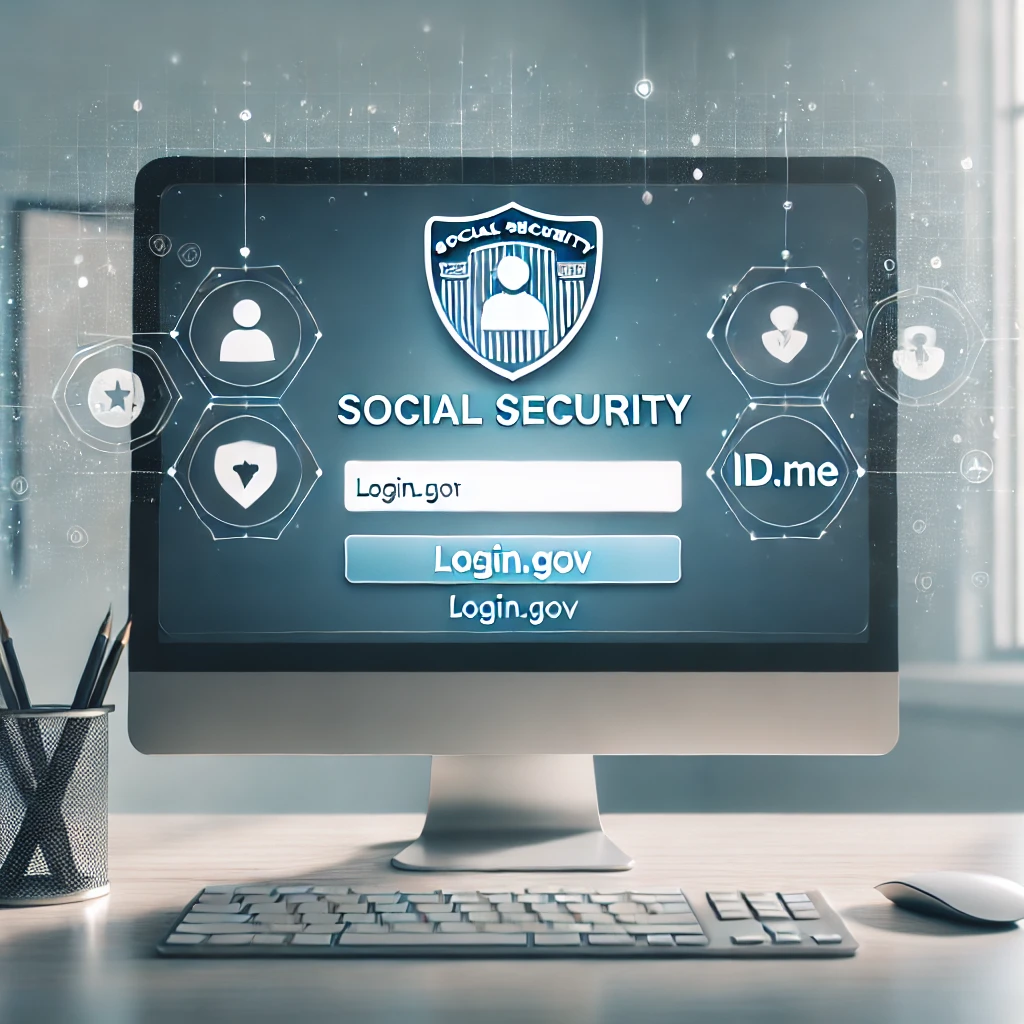Enhancements to Secure Your Social Security Online Services: A Complete Guide

Why Is It Important to Update Your Social Security Account?
Benefits of the Transition
- Streamlined Access: With a single account, you can access multiple government services, reducing the need to remember multiple usernames and passwords. This integration simplifies the user experience and enhances convenience, allowing you to manage your Social Security account and other government services more efficiently.
- Increased Security: Transitioning to a Login.gov or ID.me account provides robust security measures, including multi-factor authentication, to protect your personal information. Multi-factor authentication adds an extra layer of security by requiring users to provide two or more verification factors to gain access to their accounts. This significantly reduces the risk of unauthorized access, even if your password is compromised.
- User-Friendly Interface: Both platforms are designed to be intuitive and easy to navigate, making it simple to manage your Social Security account. The user-friendly design ensures that even those who are not tech-savvy can easily update their accounts and enjoy the benefits of enhanced security.
Steps to Update Your Social Security Account
Updating your account is a straightforward process, but it is essential to follow each step carefully to ensure a smooth transition. Here’s a detailed step-by-step guide:
- Visit the Official Social Security Website: Navigate to ssa.gov and log in to your “my Social Security” account. Ensure you are on the official website to avoid phishing scams. Phishing scams often mimic official websites to trick users into providing their login credentials, so double-check the URL before proceeding.
- Transition Your Account: Follow the on-screen prompts to transition your account to Login.gov or ID.me. This process involves verifying your identity to ensure that your account is secure. The system will guide you through the necessary steps, providing clear instructions on how to complete the transition.
- Complete Identity Verification: Follow the instructions provided to complete the identity verification process. This may involve submitting additional documentation, such as a government-issued ID or a utility bill, to confirm your identity. The verification process is crucial for maintaining the security of your account and preventing unauthorized access.
- Enjoy Enhanced Security: Once your account is linked, you can securely access your Social Security services without interruption. The enhanced security measures will protect your personal information from potential threats, giving you peace of mind knowing that your data is safe.
Understanding Login.gov and ID.me
Both Login.gov and ID.me are trusted platforms used by various government agencies to provide secure access to online services. Here’s how they work:
- Login.gov: Managed by the General Services Administration (GSA), Login.gov offers a simple, secure way to access government services. It uses multi-factor authentication to verify your identity, ensuring that only authorized users can access sensitive information. The platform is designed to be user-friendly, with a straightforward interface that makes it easy to manage your account.
- ID.me: ID.me is a private company that partners with government agencies to provide secure identity verification services. It offers a variety of verification methods, including video calls with trained representatives for those who need assistance. ID.me’s flexible verification options make it accessible to a wide range of users, ensuring that everyone can complete the verification process with ease.
How to Recognize Legitimate SSA Communications
While the SSA does send official communications, it’s crucial to verify their authenticity. Cybercriminals often attempt to impersonate government agencies to trick individuals into revealing personal information. Here are some tips to help you recognize legitimate SSA communications:
- Check the Sender’s Email Address: Ensure that the email address ends with “.gov.” Be wary of any email that appears to be from the SSA but uses a different domain. Scammers often use email addresses that closely resemble official ones, so pay close attention to the details.
- Look for Official Logos and Branding: Legitimate communications from the SSA will include official logos and branding. If an email looks suspicious, compare it to previous communications you’ve received from the SSA. Inconsistencies in logos, fonts, or formatting can be red flags.
- Avoid Clicking on Suspicious Links: If an email contains links, hover over them to see the URL before clicking. Ensure the URL directs you to an official government website. Scammers often use links that lead to fraudulent websites designed to steal your information.
- Contact the SSA Directly: If you’re unsure about the legitimacy of a communication, contact the SSA directly using the contact information on their official website. The SSA can verify whether the communication is genuine and provide guidance on how to proceed.
Staying Safe from Scams
Social Security scams remain a concern, even though their prevalence has decreased. Scammers often mimic official communications to deceive individuals into revealing personal information. It is vital to stay alert and only use secure methods to access your Social Security account. Here are some additional tips to protect yourself:
- Verify the Source: Ensure that any communication you receive is from a legitimate “.gov” address. Be cautious of unsolicited communications, especially those that ask for personal information or payment.
- Do Not Share Personal Information: Avoid sharing your Social Security number, bank account details, or other sensitive information via email or phone. Legitimate government agencies will never ask for this information in an unsolicited manner.
- Report Suspicious Activity: If you suspect a scam, report it to the Office of the Inspector General’s fraud hotline. Reporting scams helps authorities track and combat fraudulent activities, protecting others from falling victim.
The Importance of Vigilance Against Social Security Scams
Social Security scams can take many forms, from phishing emails to phone calls impersonating SSA officials. These scams are designed to trick individuals into providing personal information or making payments. By staying informed and vigilant, you can protect yourself from these threats. Here are some common types of Social Security scams and how to recognize them:
- Phishing Emails: Scammers send emails that appear to be from the SSA, asking you to click on a link or download an attachment. These emails often contain urgent messages, such as threats to suspend your benefits if you do not respond. Always verify the sender’s email address and avoid clicking on suspicious links.
- Phone Scams: Scammers call pretending to be SSA officials, claiming there is an issue with your Social Security number or benefits. They may ask for personal information or payment to resolve the issue. Remember, the SSA will never call you to demand payment or threaten you with arrest.
- Fraudulent Websites: Scammers create websites that mimic the official SSA website, tricking users into entering their login credentials. Always ensure you are on the official SSA website by checking the URL and looking for the “.gov” domain.
Conclusion
The SSA’s enhancements to its online services reflect its commitment to protecting users’ information and improving service delivery. By transitioning to a more secure login system through Login.gov or ID.me, users can continue to access their Social Security accounts with confidence, knowing their information is safeguarded against potential threats. Staying informed about the latest security measures and being vigilant against scams are critical steps in protecting your benefits and personal information.
Internal Resources for Further Reading
For more information on securing your Social Security account and understanding multi-factor authentication, visit these official SSA pages:
- How to Protect Your Social Security Number
- Understanding Multi-Factor Authentication
- Avoiding Social Security Scams
Here is a table with relevant sources from official government websites:
